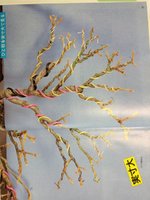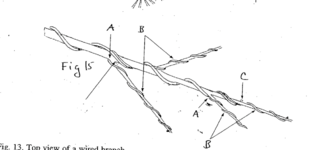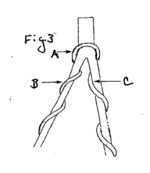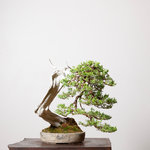Tntthunder
Yamadori
So I recently went to my first workshop and it was great, I learnt a lot and It made me a little more confident with trying to do things alone. However when it comes to wiring I am still not confident in my abilities and I was hoping to get advice on the wiring here?
Basically I used a young and ugly juniper that someone gave me to practice the limited wiring I could do on it. Last time I tried to wire, all the wired branches died in the winter. Not sure if I was too rough or they were too tight etc. So how did I do here with the very little I did? Is it too tight? Are they anchored correctly in the soil?
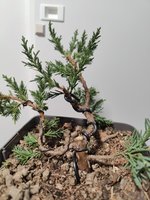
Furthermore, I noticed I may have been a little rough, would a split like this kill the branch? How can I prevent this in the future and how can I help the tree it if it happens?
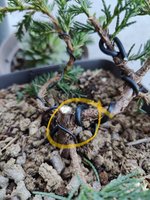
Any advice on how to improve would be awesome.
Also this is the tree the teacher at the workshop helped me on, it's a yew, unfortunately the branches he left are too green to wire so have a year or two before I can do anything he said. We will work with it again together in the future and he said to come up with ideas for possible designs to aim for. Also mentioned bonsai works with triangles, hence the way I drew it.
Would something like this be ok? The apex and the main branch heading left. What other possibilities are there?


Also when doing the dead wood, did I cut too deeply? Will these marks be a bad thing or will they wear away along with the deadwood getting a softer look?

Sorry for all the questions! Guess I am just getting more and more curious about this art form.
Basically I used a young and ugly juniper that someone gave me to practice the limited wiring I could do on it. Last time I tried to wire, all the wired branches died in the winter. Not sure if I was too rough or they were too tight etc. So how did I do here with the very little I did? Is it too tight? Are they anchored correctly in the soil?

Furthermore, I noticed I may have been a little rough, would a split like this kill the branch? How can I prevent this in the future and how can I help the tree it if it happens?

Any advice on how to improve would be awesome.
Also this is the tree the teacher at the workshop helped me on, it's a yew, unfortunately the branches he left are too green to wire so have a year or two before I can do anything he said. We will work with it again together in the future and he said to come up with ideas for possible designs to aim for. Also mentioned bonsai works with triangles, hence the way I drew it.
Would something like this be ok? The apex and the main branch heading left. What other possibilities are there?


Also when doing the dead wood, did I cut too deeply? Will these marks be a bad thing or will they wear away along with the deadwood getting a softer look?

Sorry for all the questions! Guess I am just getting more and more curious about this art form.
Last edited:





